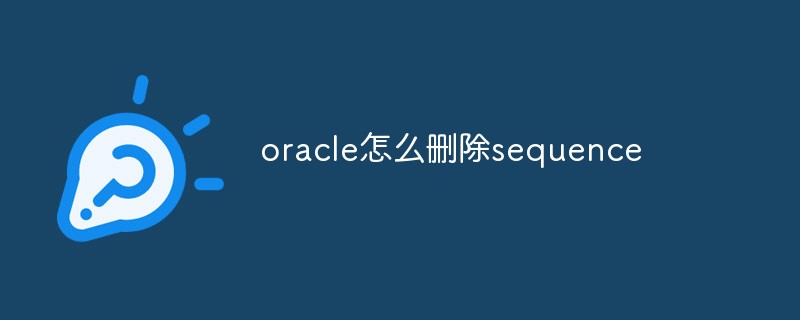Difference: 1. dg refers to Data Guard data guard, which has the backup function and can ensure the high availability and data protection of data. adg is "Active Data Guard", which can query or export data and is suitable for Read-only application; 2. dg reading and writing cannot be parallel, but adg reading and writing can be parallel.

The operating environment of this tutorial: Windows 10 system, Oracle 11g version, Dell G3 computer.
What is the difference between dg and adg in oracle
DG (Data Guard)
DG (Data Guard, Data Guard) is not a backup and recovery Tools, however, DG has a backup function. It can be exactly the same as the main database under physical DG, but its purpose of existence is not just to backup and restore data. It should be said that its existence is to ensure the high availability of enterprise data. Data protection and disaster recovery. DBA can reduce the pressure on the main database and build a highly available enterprise database application environment by transferring some operations (such as query reports) to the standby database for execution.
In the DG environment, there are at least two databases, one of which is in OPEN state and provides external services. This database is called the Primary Database. The second one is in recovery state and is called Standby Database. Under normal circumstances, the main database provides services to the outside world, and users perform operations on the main database. The operations are recorded in online logs and archive logs. These logs are transmitted to the standby database through the network, and then applied on the standby database, thereby realizing the primary database. Data synchronization between database and standby database.
Oracle has further optimized the design of this process, making the log delivery and recovery work more automated and intelligent, and provides a series of parameters and commands to simplify DBA work. If the software and hardware are upgraded, the standby database can be switched to the primary database to continue external services. This reduces the service downtime and prevents data loss. If the main database is unavailable due to abnormal reasons, the standby database can also be forced to switch to the main database to continue external services. In this case, the data loss is related to the configured data protection level. Therefore, Primary and Standby are just role concepts and are not fixed in a certain database.
adg
Before Oracle 11g, the physical standby could not be opened when redo was applied, but could only be mounted. Starting from 11g, when applying redo, the physical standby database can be in read-only mode, which is called Active Data Guard. Through Active Data Guard, you can query or export data in the physical standby database, thereby reducing access and pressure on the primary database.
Active Data Guard is suitable for some read-only applications. For example, some applications only query data and perform some reporting services without generating redo data. These applications can be transferred to the standby database to avoid redo data. Contention for master library resources.
ADG mainly solves the problem of parallel reading and writing in the DG era.
If the data synchronization method in the DG era adopts the physical method of Redo Log, the database will synchronize data quickly and The resource consumption is low, but there is a big problem.
The Data Guard physical backup database before Oracle 11G can open the data in read-only mode, but the data synchronization process of the log stops at this time. If the data synchronization of the log is in progress, the database cannot be opened. That is to say, the two states of log reading and writing are mutually exclusive. Active Data Guard mainly solves this problem.
Oracle has the function of flashback database to avoid irreversible misoperations such as table deletion
When the main database is open and active, the transaction is in the processing state and generated Redo Log data and transfer it to the standby database. Under normal circumstances, data synchronization can be achieved in seconds. However, if an incorrect command is executed on the primary database, such as drop database, all data in the standby database will also be deleted.
Oracle DG provides an easy-to-use way to avoid this user error. DBA can use the flashback database function in the primary database and standby database at the same time to quickly restore the database to an earlier point in time, thereby canceling this misoperation.
In addition, Oracle also provides the function of delayed backup database synchronization, which is another way to prevent misoperation.
Recommended tutorial: "Oracle Video Tutorial"
The above is the detailed content of What is the difference between dg and adg in oracle. For more information, please follow other related articles on the PHP Chinese website!
 什么是oracle asmApr 18, 2022 pm 04:16 PM
什么是oracle asmApr 18, 2022 pm 04:16 PMoracle asm指的是“自动存储管理”,是一种卷管理器,可自动管理磁盘组并提供有效的数据冗余功能;它是做为单独的Oracle实例实施和部署。asm的优势:1、配置简单、可最大化推动数据库合并的存储资源利用;2、支持BIGFILE文件等。
 oracle怎么查询所有索引May 13, 2022 pm 05:23 PM
oracle怎么查询所有索引May 13, 2022 pm 05:23 PM方法:1、利用“select*from user_indexes where table_name=表名”语句查询表中索引;2、利用“select*from all_indexes where table_name=表名”语句查询所有索引。
 Oracle怎么查询端口号May 13, 2022 am 10:10 AM
Oracle怎么查询端口号May 13, 2022 am 10:10 AM在Oracle中,可利用lsnrctl命令查询端口号,该命令是Oracle的监听命令;在启动、关闭或重启oracle监听器之前可使用该命令检查oracle监听器的状态,语法为“lsnrctl status”,结果PORT后的内容就是端口号。
 oracle全角怎么转半角May 13, 2022 pm 03:21 PM
oracle全角怎么转半角May 13, 2022 pm 03:21 PM在oracle中,可以利用“TO_SINGLE_BYTE(String)”将全角转换为半角;“TO_SINGLE_BYTE”函数可以将参数中所有多字节字符都替换为等价的单字节字符,只有当数据库字符集同时包含多字节和单字节字符的时候有效。
 oracle怎么删除sequenceMay 13, 2022 pm 03:35 PM
oracle怎么删除sequenceMay 13, 2022 pm 03:35 PM在oracle中,可以利用“drop sequence sequence名”来删除sequence;sequence是自动增加数字序列的意思,也就是序列号,序列号自动增加不能重置,因此需要利用drop sequence语句来删除序列。
 oracle怎么查询数据类型May 13, 2022 pm 04:19 PM
oracle怎么查询数据类型May 13, 2022 pm 04:19 PM在oracle中,可以利用“select ... From all_tab_columns where table_name=upper('表名') AND owner=upper('数据库登录用户名');”语句查询数据库表的数据类型。
 oracle查询怎么不区分大小写May 10, 2022 pm 05:45 PM
oracle查询怎么不区分大小写May 10, 2022 pm 05:45 PM方法:1、利用“LOWER(字段值)”将字段转为小写,或者利用“UPPER(字段值)”将字段转为大写;2、利用“REGEXP_LIKE(字符串,正则表达式,'i')”,当参数设置为“i”时,说明进行匹配不区分大小写。
 Oracle怎么修改sessionMay 13, 2022 pm 05:06 PM
Oracle怎么修改sessionMay 13, 2022 pm 05:06 PM方法:1、利用“alter system set sessions=修改后的数值 scope=spfile”语句修改session参数;2、修改参数之后利用“shutdown immediate – startup”语句重启服务器即可生效。


Hot AI Tools

Undresser.AI Undress
AI-powered app for creating realistic nude photos

AI Clothes Remover
Online AI tool for removing clothes from photos.

Undress AI Tool
Undress images for free

Clothoff.io
AI clothes remover

AI Hentai Generator
Generate AI Hentai for free.

Hot Article

Hot Tools

SAP NetWeaver Server Adapter for Eclipse
Integrate Eclipse with SAP NetWeaver application server.

EditPlus Chinese cracked version
Small size, syntax highlighting, does not support code prompt function

Dreamweaver Mac version
Visual web development tools

Notepad++7.3.1
Easy-to-use and free code editor

VSCode Windows 64-bit Download
A free and powerful IDE editor launched by Microsoft







